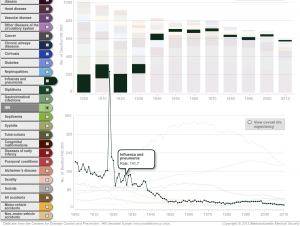How dangerous are weddings?
According to the Herald, the ACC wants us to be careful about weddings — about getting injured at them, that is.
Weddings are supposed to be the happiest day of your life – try telling that to the hundreds of people who make ACC claims for injuries at ceremonies.
From tripping on the bride’s dress to swallowing the ring, nuptials can be surprisingly hazardous.
New figures show at least 600 people made claims to the ACC between 2010 and 2012.
So, how does the 600 claims over three years compare to what you’d expect from an average day?
The ACC accepted 1.7 million new claims last year, which gives about 0.4 claims per person per year, or about 0.001 per person per day.
There were about 20 000 marriages in New Zealand last year, so about 60 000 over 2010-2012, giving about 0.01 ACC claims per marriage. The 600 reported claims would then be about what you’d expect if there were 10 person-days of exposure per marriage.
My experience is that wedding celebrations typically involve more than ten people, and, with setup and rehearsals, often more than one day. It looks as though weddings, like Christmas, are actually safer than ordinary days.

